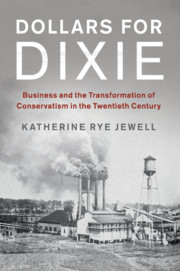Book contents
Bibliography
Published online by Cambridge University Press: 13 July 2017
- Type
- Chapter
- Information
- Dollars for DixieBusiness and the Transformation of Conservatism in the Twentieth Century, pp. 291 - 310Publisher: Cambridge University PressPrint publication year: 2017

